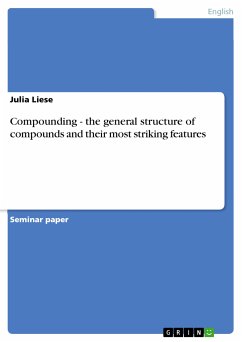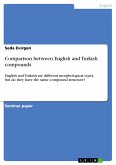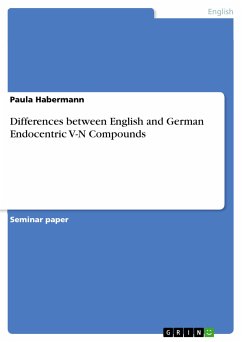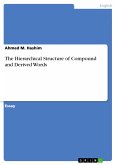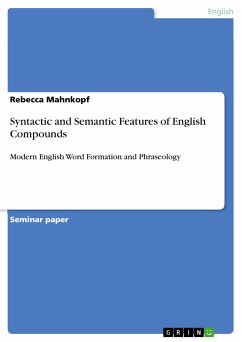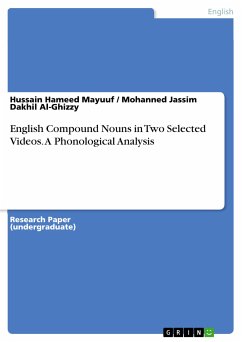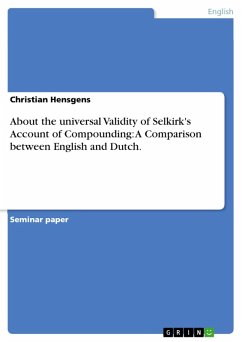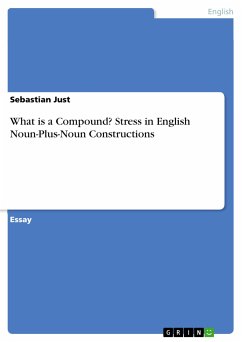Seminar paper from the year 2009 in the subject English Language and Literature Studies - Linguistics, grade: 1,0, Free University of Berlin, language: English, abstract: Is a green house a glass building to grow plants in, or simply a green colored house? And if nurse shoes are shoes for a nurse, are alligator shoes, shoes for an alligator? Ambiguity is a huge problem in almost every language, but ambiguous words can often be explained, when taking a closer look at how they were compounded. In the context of word-formation, the process of compounding plays a major role in English, as well as in many other languages. Since compounding is, next to affixation, one of the two most important derivation processes, it is reasonable to take a closer look at it. Therefore this paper will examine the structure and the features of English compounds. I will begin with a definition of compounds in general, before illustrating compound stress patterns, recursivity, headedness and the binary structure of compounds. Then I will analyze the most important classes of compounds and investigate the different possibilities to link nouns, verbs, adjectives and prepositions. Besides that, I will present some ways how to interpret certain compounds and show some exceptions. Furthermore, I will present other forms of compounds, as neoclassical and copulative compounds, and examine their structure as well. As a final point I will close this paper off with concluding remarks.
